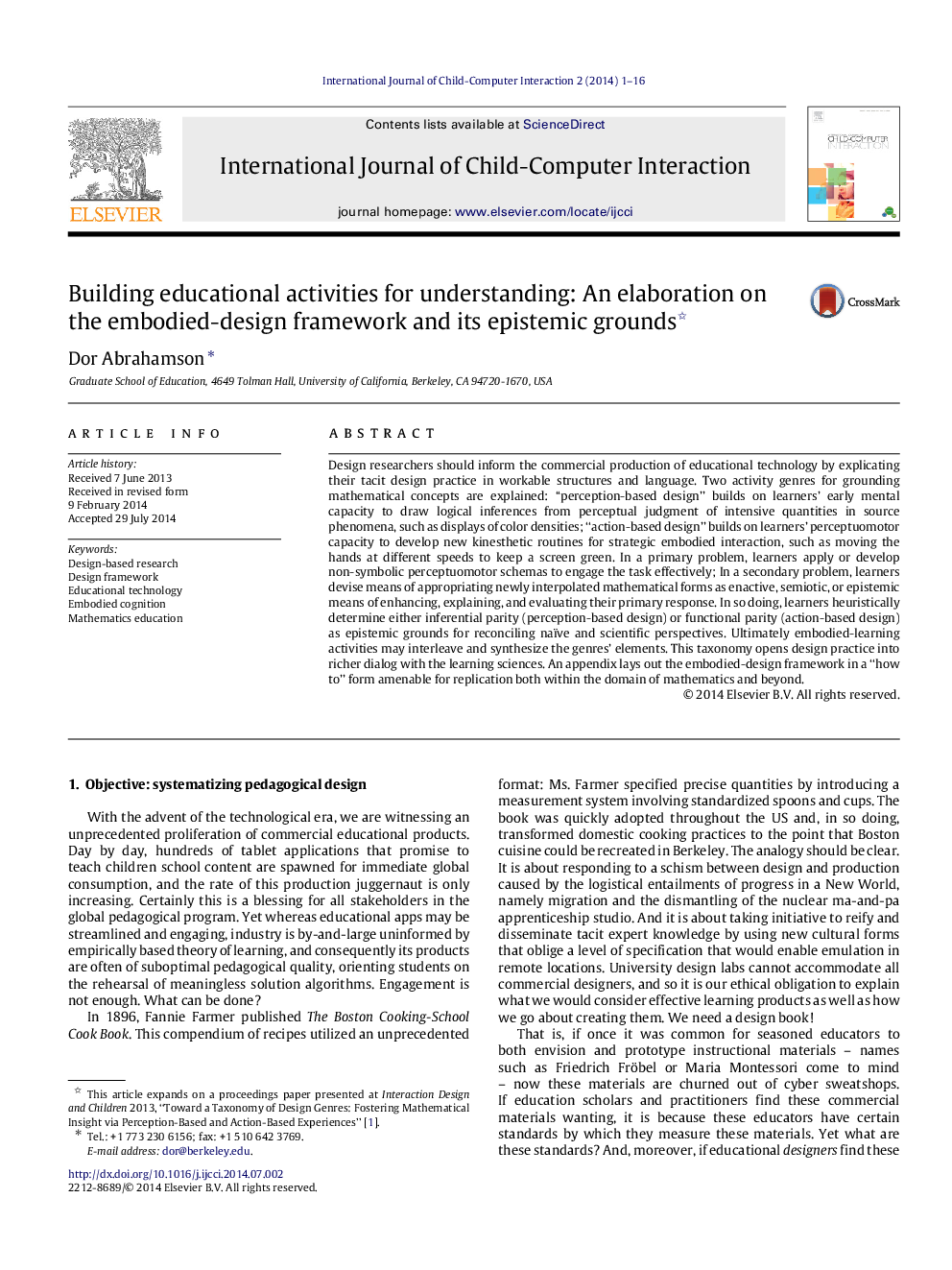| کد مقاله | کد نشریه | سال انتشار | مقاله انگلیسی | نسخه تمام متن |
|---|---|---|---|---|
| 324437 | 1432794 | 2014 | 16 صفحه PDF | دانلود رایگان |
Design researchers should inform the commercial production of educational technology by explicating their tacit design practice in workable structures and language. Two activity genres for grounding mathematical concepts are explained: “perception-based design” builds on learners’ early mental capacity to draw logical inferences from perceptual judgment of intensive quantities in source phenomena, such as displays of color densities; “action-based design” builds on learners’ perceptuomotor capacity to develop new kinesthetic routines for strategic embodied interaction, such as moving the hands at different speeds to keep a screen green. In a primary problem, learners apply or develop non-symbolic perceptuomotor schemas to engage the task effectively; In a secondary problem, learners devise means of appropriating newly interpolated mathematical forms as enactive, semiotic, or epistemic means of enhancing, explaining, and evaluating their primary response. In so doing, learners heuristically determine either inferential parity (perception-based design) or functional parity (action-based design) as epistemic grounds for reconciling naïve and scientific perspectives. Ultimately embodied-learning activities may interleave and synthesize the genres’ elements. This taxonomy opens design practice into richer dialog with the learning sciences. An appendix lays out the embodied-design framework in a “how to” form amenable for replication both within the domain of mathematics and beyond.
Journal: International Journal of Child-Computer Interaction - Volume 2, Issue 1, January 2014, Pages 1–16
